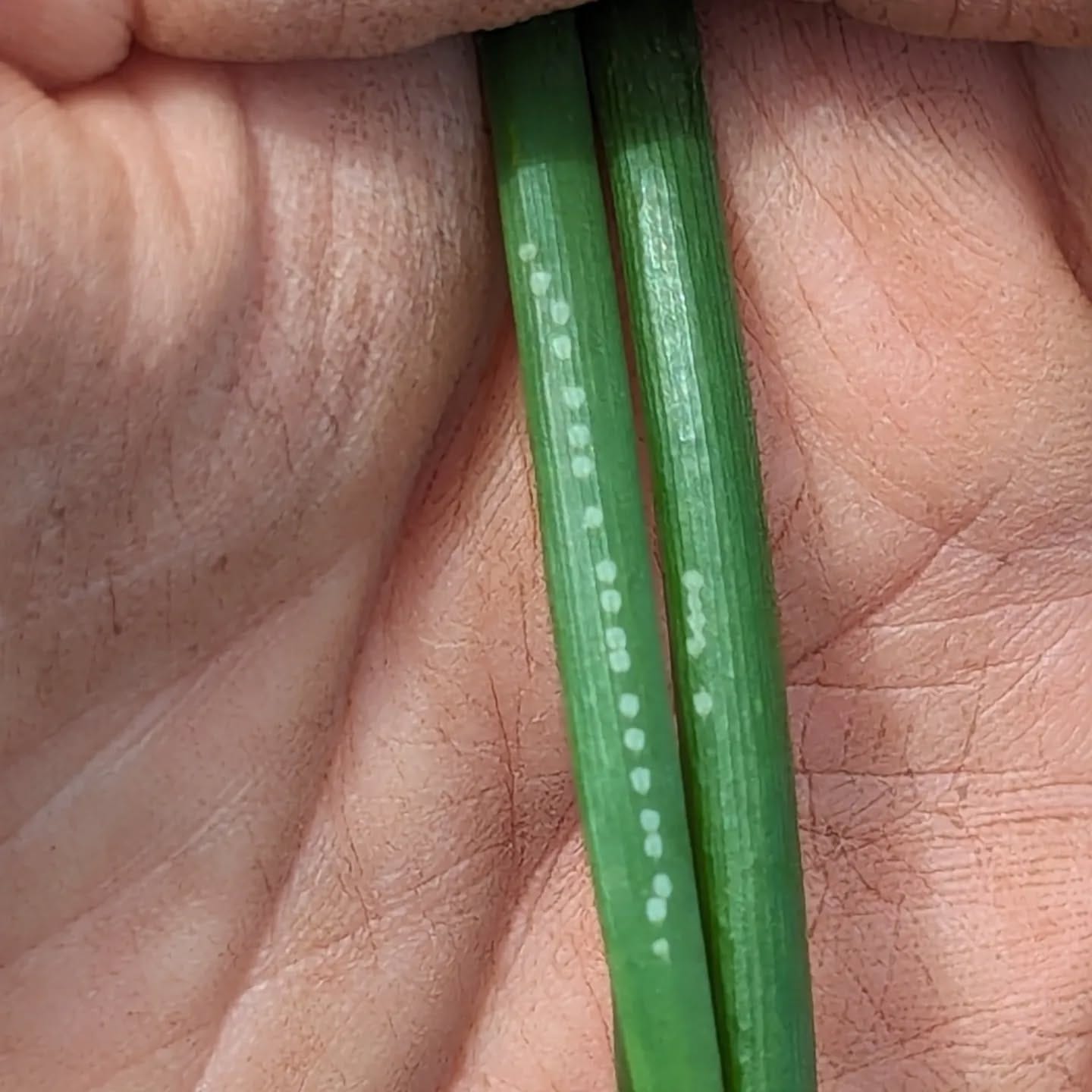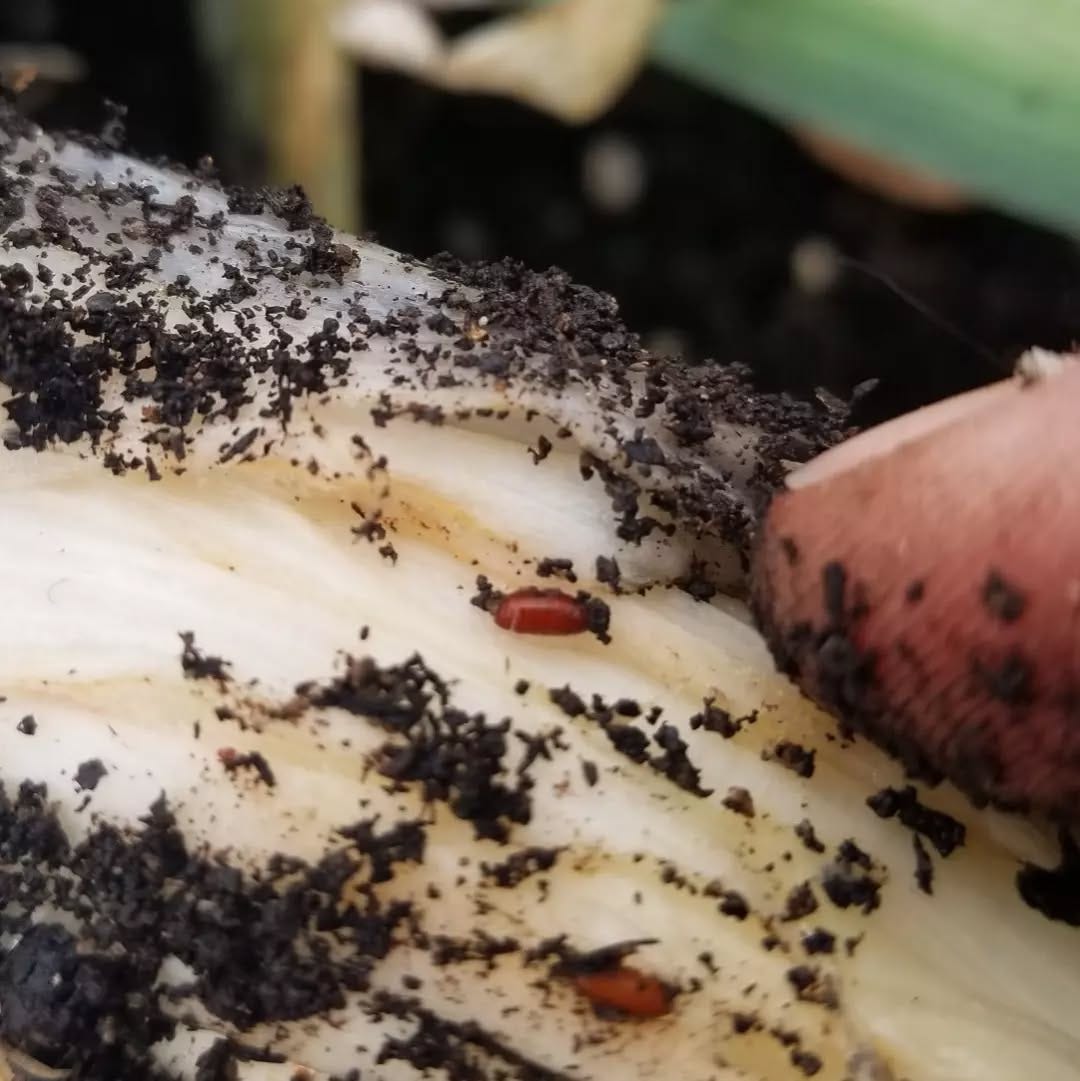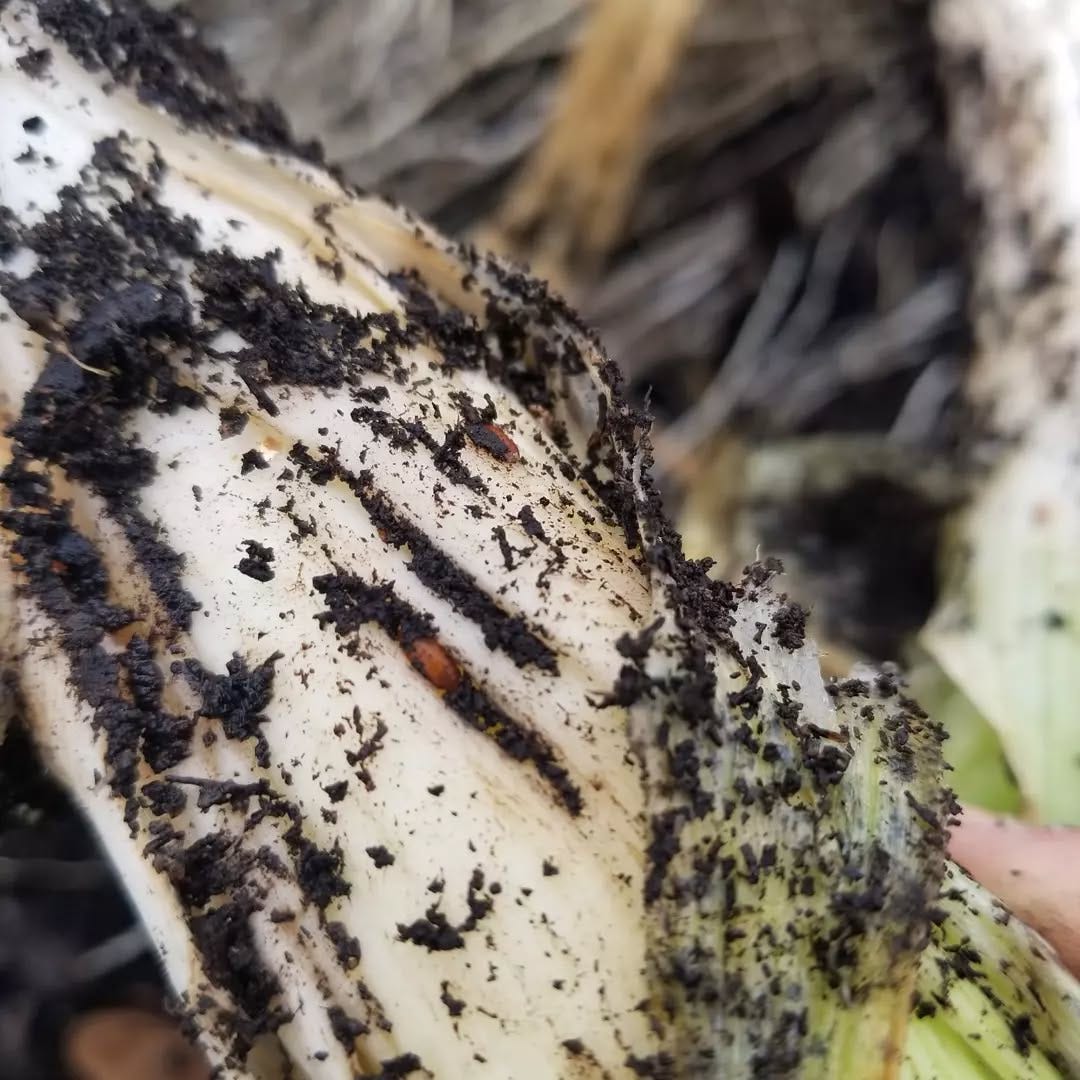As a reminder: This article and all of my articles are written from the perspective of a gardener with a 1/4 acre lot in suburban Philadelphia, Pennsylvania, US, zone 6b/7a, with heavy clay, rocky soil. My garden is typically frost free between May 15th and October 15th.
Ten years ago this growing season, I lived in a rented house with a smaller garden, steps outside of the city limits of Philadelphia. I grew a lot of food in my little garden beds and more food in the front yard foundation beds. I didn’t grow onions or garlic then. I shopped weekly at the Bryn Mawr Farmer’s Market for the food I didn’t grow myself. I remember vividly that summer, all the market farmers I had become friendly with over the years were talking about a new pest in their onion family crops. Extension entomologists from Penn State also visited the market, speaking with the farmers, and taking samples from the market tables. I spoke to them while I shopped. Most farmers had signs next to their onion family crops, explaining what shoppers may find inside, and sold them at a steep discount. I still purchased some onions, and I did find that some of them, although they seemed sound enough on the outside, had some fly pupae on the inside. I remember learning about Allium Leaf Miner then, and seeing the tell-tale scars on my own chive leaves the following growing season.

Allium Leaf Miner (ALM) is a fly that arrived in Lancaster County, Pennsylvania, United States in 2015. The fly is native to Poland. Allium Leaf Miners require Allium family plants to complete their life cycle. The female fly punctures leaves with its ovipositor and lays eggs inside the leaves. Both male and female flies drink sap from the oviposition scars. The larvae eat the internal tissue of the plant while moving toward the roots of the plant. They pupate inside the plant or in the soil very near the plant. In crops like garlic, onions, leeks, and shallots, the damage is severe. The crops are at least unmarketable. In most cases, there is total crop loss. The feeding damage to the internal tissue negatively impacts the the shelf life of the crops. Where many larvae have fed, the produce is mushy. Where few larvae have fed, the produce doesn’t store well. For crops like chives, the damage is cosmetic. My chives host ALM every year and they continue to thrive. After they flower, I cut them back to the ground to avoid eating any larvae and let them regrow. A New Jersey Flower Farmer I know grows ornamental Alliums and they are also not affected. No one is trying to eat the bulbs of those showy purple floral orbs used to make bouquets. These flies only seem to affect the palatability, marketability, and storage life of human staple crops.
Allium Leaf Miner has two adult flights per year in Pennsylvania, a spring and a fall flight. In the suburbs of Philadelphia, the spring flight emerges from the soil in late March or early April and flies for seven weeks. I keep my Allium crops covered with insect netting until late May. The second flight of adults emerges in late September and flies for another seven weeks. I plant my garlic in mid November to avoid the second flight. The garlic, of course, must be netted by the end of March in the following spring to avoid damage from the spring flight. Many gardeners and farmers in my region grow leeks as a fall crop. They must be covered by early to mid September and remain covered until mid November. Here are some photos of the total crop loss I experienced in the autumn of 2021 when I didn’t get my leeks netted in time. ALM overwinter as pupae.


Since 2015, ALM have spread all over Pennsylvania, New Jersey, Maryland, New York, Connecticut, and Massachusetts. The good news is that it’s easy for the home gardener to prevent damage to their crops with insect netting. Penn State Extension shares a GDD (Growing Degree Day) model of 350 accumulated degree days from January 1st with a 1 degree C basis. Using this model and Cornell’s Network for Environment and Weather Applications, NEWA, I know that the first flight of ALM started to emerge where I live on April 5th this year. If you’re not familiar with the concept of Growing Degree Days, you can find out more here:
Here’s a link to find a weather station that provides GDD data near you.

If you live in the Mid-Atlantic, Hudson Valley, Massachusetts, or Connecticut, you should check out your land grant university extension websites for information about Allium Leaf Miner near you. Here’s information from Penn State Extension for Spring of 2025. This website has directions for how to use NEWA to find the date of ALM emergence near where you farm or garden.
Penn State Extension Allium Leaf Miner Information, Spring 2025
All of the photos in this article were made by me, of my own garden, of my own produce, of my own equipment, and of the animals and insects that live in or visit my garden in the Philly burbs.



Thank you for this information. With the photos and details you shared, it's clear that this is what has been attacking my leeks and scallions. (I thought it was leek moth caterpillars.) The one thing you didn't mention is the horrible smell of badly infected plants. Now I need to figure out how to control this awful pest without insecticides. I'm not well organized enough to use row covers (and I don't want to import more synthetics into my garden anyway).
Fascinating.
And thanks for shouting out the county extension service. Not enough people know about this amazing resource.